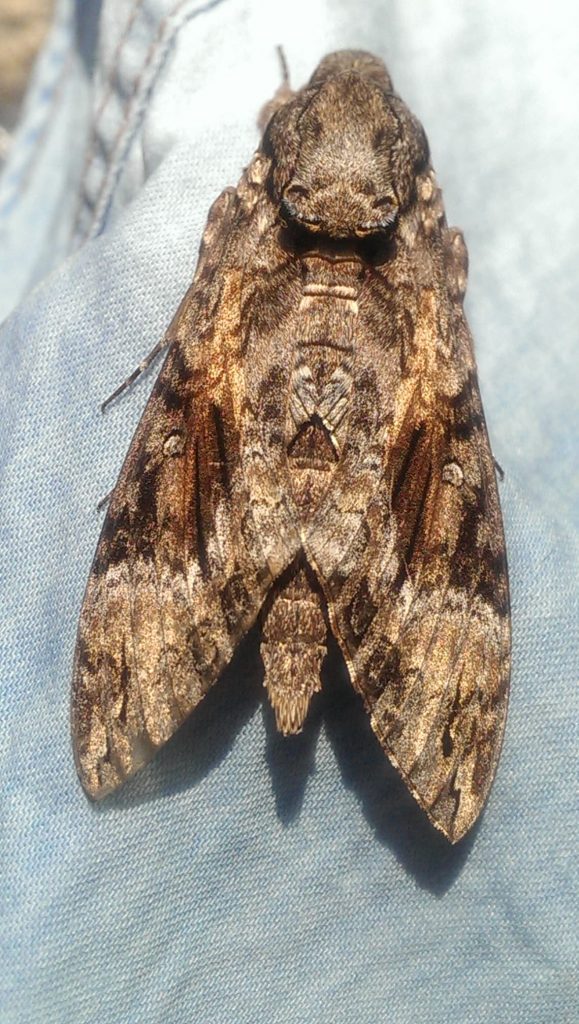
My name is Jessica Hernández Jerónimo. I studied biology and I’m in the process of getting my bachelor’s degree at Facultad de Ciencias, Universidad Nacional Aútonoma de México in Mexico City.
I did my thesis about the diversity of butterflies of the Cuatro Ciénegas Basin, Coahuila; and it is from there that I had my first contact with Lepidoptera in a professional way.
When I visited my grandparents’ house, I always liked to take tours in less urbanized spaces to appreciate the flora and fauna that are present there. I also like to practice bird watching, carry out and participate in environmental education and science dissemination activities.
One of those activities I started as a hobby was with the Facebook group “Mariposas of Mexico, diurnas y nocturnas“ which I joined in 2013. Since then, I have been a member sharing some information notes and promoting the dissemination of this order of insects.

Sphingidae en el tendedero 
Colección de mariposas de la casa de la Abuela Oaxaca 
caterpillar
In 2017, I found out that there was a Facebook page for National Moth Week, a project that dedicates a week to observing moths that you could participate in by registering an event. It was very cool! So I asked Juan Carlos García Morales – founder of the Mexican Facebook group- to participate in this activity, he said yes! Since then, the group has been participating.
In 2018, I created the project “Mariposas Nocturnas y Polillas de México- Moths of Mexico” in the Naturalista Platform, and I realized the great richness of recorded species. Although I do not have a favorite species or family – I love caterpillars, well In general, any species of Lepidopera larvae – when I collected them, most belonged to this group, since I like to know their life cycles and interactions with host plants.
This year, I am participating in a citizen science project with a team of women to observe butterflies, and thanks to that I noticed that in Mexico this activity is not yet practiced as it is in the USA, Canada or Europe.
Most of the observations made by people have turned out to be species that have a wide distribution in the American continent or they are native to Mexico.
And it is thanks to the participation of people that encourages us more and more to continue promoting these activities, to visualize the moths and get to know them in their different cultural, ecological and systematic aspects, since neww species and records are still unknown, in addition to demystifying some myths that are still present.
As a coordinator, I would like to continue carrying out these activities as well as inspiring more people to participate in this international event and create support networks with more people to give the recognition that this group of insects deserves.
Jessica joins country and regional coordinators in Hong Kong, Africa, Greece, Costa Rica, Japan, India, Czechoslovakia, Greece, Israel and Nepal, who help to promote and increase participation in National Moth Week.